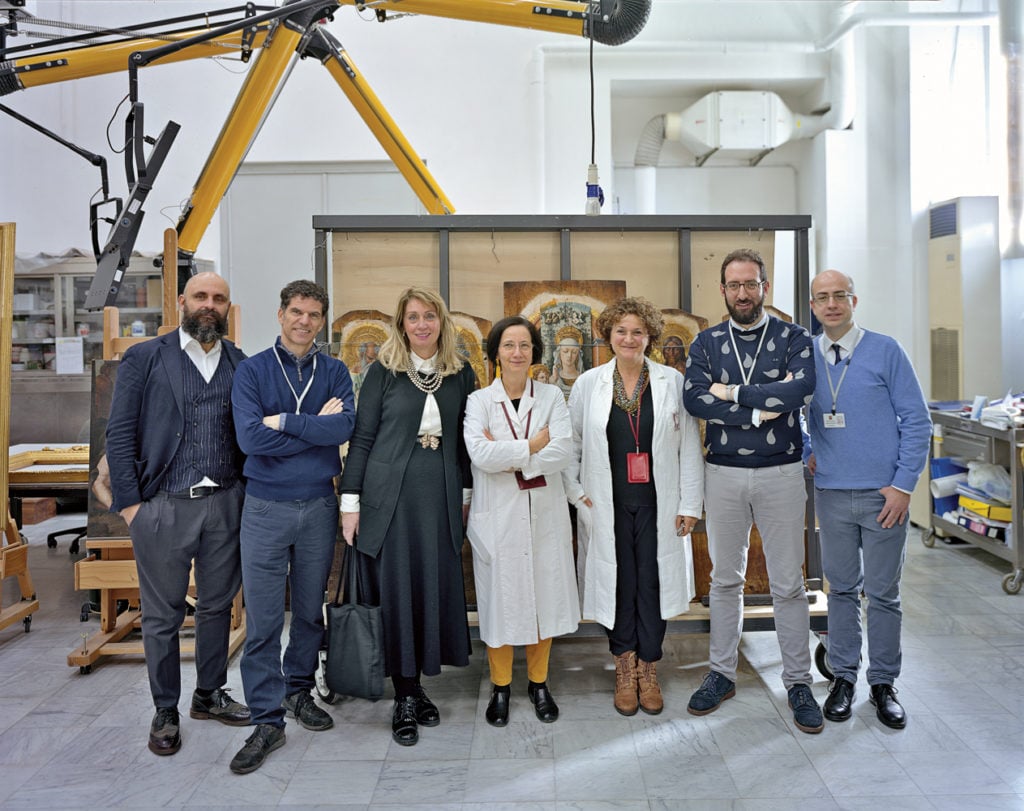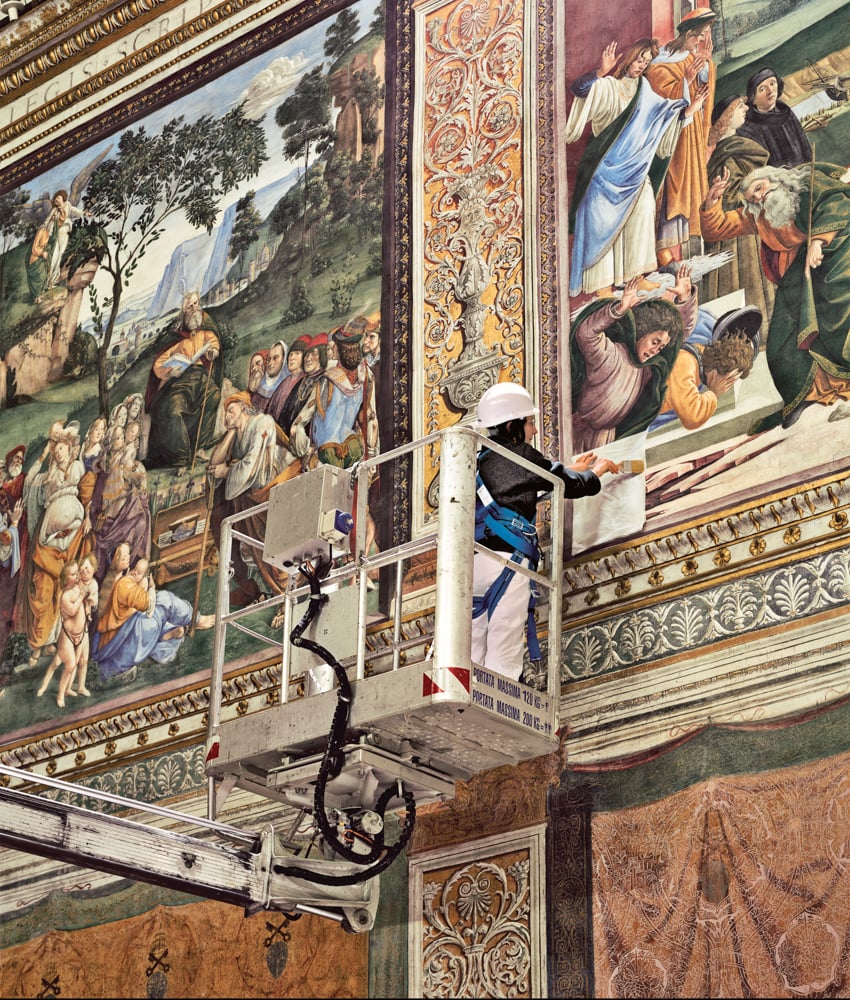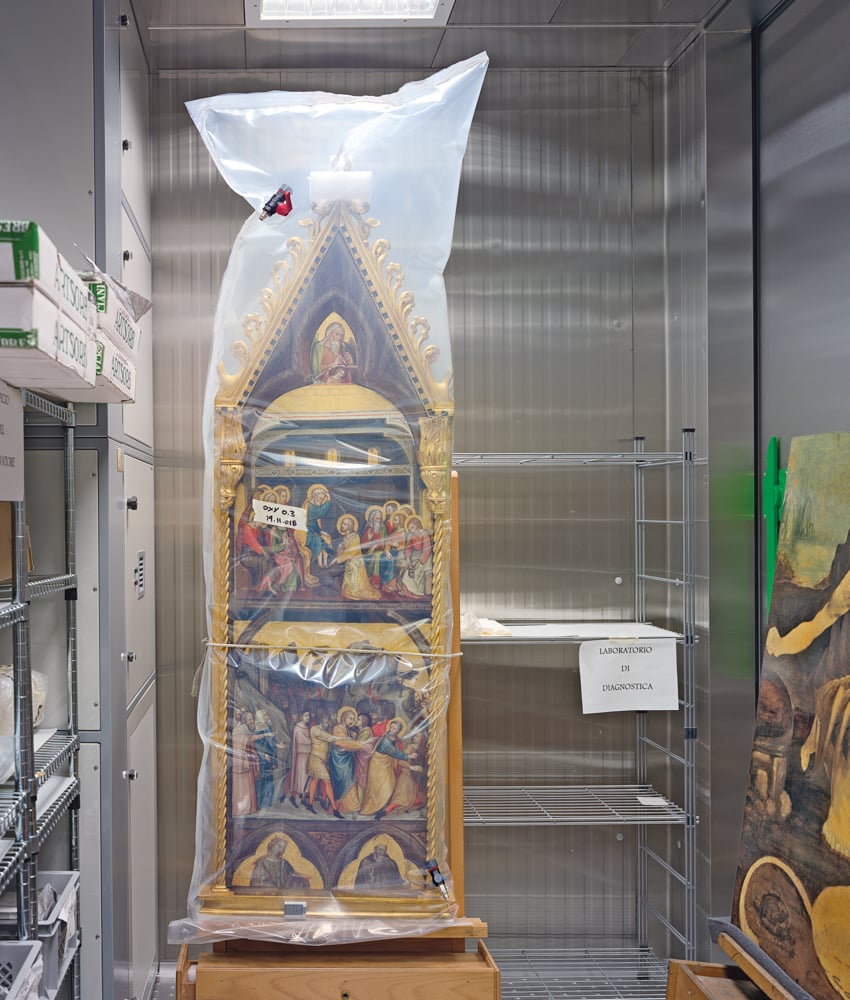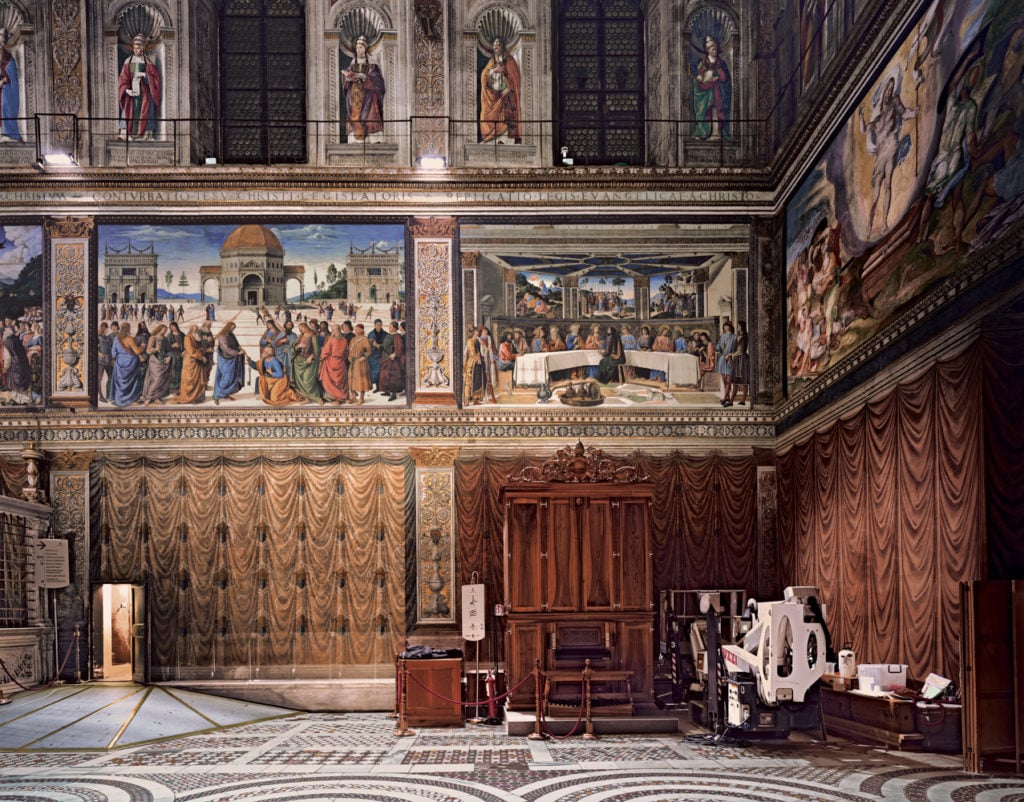How Long Was It Before The Sistine Chapel Was Cleaned
In the 1980s, the Vatican famously began an extensive restoration of the Sistine Chapel, clearing away centuries of dirt and grime from Michelangelo's famed frescos. When that project ended in 1994, a new one began: the careful monitoring and so-called "preventative conservation" of the works, which are at present seen by close to vii one thousand thousand visitors each twelvemonth. The proper noun of the game? Constant vigilance.
In a special backside-the-scenes wait, theWall Street Journal Mag visited the chapel after hours to see how the delicate artworks are advisedly monitored to make sure they are not threatened past contaminants brought in by hoards of visitors (more than than 1,000 tin can crowd in at a time) who inadvertently track in dirt, dust, and leave backside traces of hair and skin.
To preserve the ceiling, the Vatican has installed LED lighting that doesn't emit UV rays and won't cause the paintings to fade. There is besides a special HVAC system, donated in 2022 by the Carrier Corporation, that keeps the temperature constantly between 22 and 24 degrees Celsius (71.6 to 75.2 degrees Fahrenheit). To proceed out impurities, four diffusers bring in and have out air. At night, staff members painstakingly grit and vacuum the entire museum. (All grit is analyzed to detect bacteria or fungi.)
"The humidity must never exist more than lx percent," Vittoria Cimino, the manager of the Conservator'south Office at the Vatican Museums, told the WSJ. "The carbon-dioxide level has to be kept lower than 800 parts per million. All these values have to exist kept stable. But the number of people in the room makes that complicated. It tin can be one, or it can be a one thousand. The homo body produces heat. And it produces carbon dioxide. If nosotros take to, nosotros can completely alter the air inside the chapel 60 times a twenty-four hours."

The Annunciation, a 16th-century work by Marcello Venusti, inside the Vatican Museums' Painting and Wood Materials Restoration Laboratory. Photo past Robert Polidori for WSJ Magazine.
Throughout the day, a Vatican conservation technician is monitoring sensors in the Sistine Chapel that track all of these variables.
But despite the Vatican's best efforts, thin layers of contamination inevitably develop. Carbon dioxide reacts to the plaster of the frescos. Through the process of condensation and evaporation, leaner accumulates. The outcome is an almost ephemeral whitish coat of soluble salts above the surface of the painting. To prevent the piece of work from being damaged, staff make clean the frescos regularly and remove contaminants while they are still soluble, using a crane-similar car nicknamed the Spider—a Multitel SMX 250 cocky-propelled tracked platform—to access the high-up paintings.
The Sistine Chapel was commissioned in 1473. Michelangelo painted the ceiling between 1508 to 1512, andThe Final Judgement from 1536 and 1541. The frescos on the side walls are by artists including Sandro Botticelli and Domenico Ghirlandaio, Michelangelo's teacher. It's an incredible corporeality of art per square inch in a space just 132 anxiety by 44 feet—and if all goes well, it will be preserved well into posterity.
See more photos below.

Members of the Vatican Museums' conservation team, including (from left) Matteo Alessandrini, Alessandro Barbaresi, Vittoria Cimino, Francesca Persegati, Alessandra Zarelli, Matteo Mucciante and Marco Maggi. Photo by Robert Polidori for WSJ Magazine.

A primary conservator demonstrating a technique for removing contaminants from a Botticelli fresco in the Sistine Chapel. Photo by Robert Polidori for WSJ Magazine.

The Spider (the Multitel SMX 250) and the Sistine Chapel's ceiling. Photo past Robert Polidori for WSJ Magazine.

Maestro di Fossa's Histories of the Passion of Jesus, and part of Leonardo da Vinci's unfinished Saint Jerome in the Desert at the conservation lab at the Vatican Museums. Photo by Robert Polidori for WSJ Magazine.

The northern wall of the Sistine Chapel. Photo by Robert Polidori for WSJ Magazine.
Follow Artnet News on Facebook:
Want to stay ahead of the fine art world? Subscribe to our newsletter to get the breaking news, heart-opening interviews, and incisive critical takes that drive the chat forrad.
Source: https://news.artnet.com/art-world/conservation-sistine-chapel-1499899
Posted by: treadawaygrathand.blogspot.com


0 Response to "How Long Was It Before The Sistine Chapel Was Cleaned"
Post a Comment